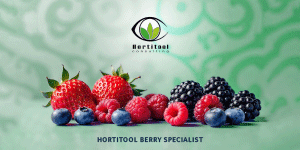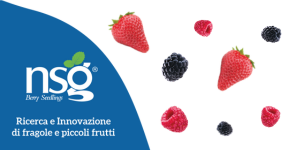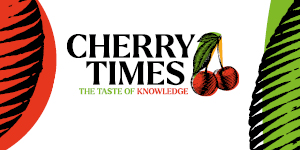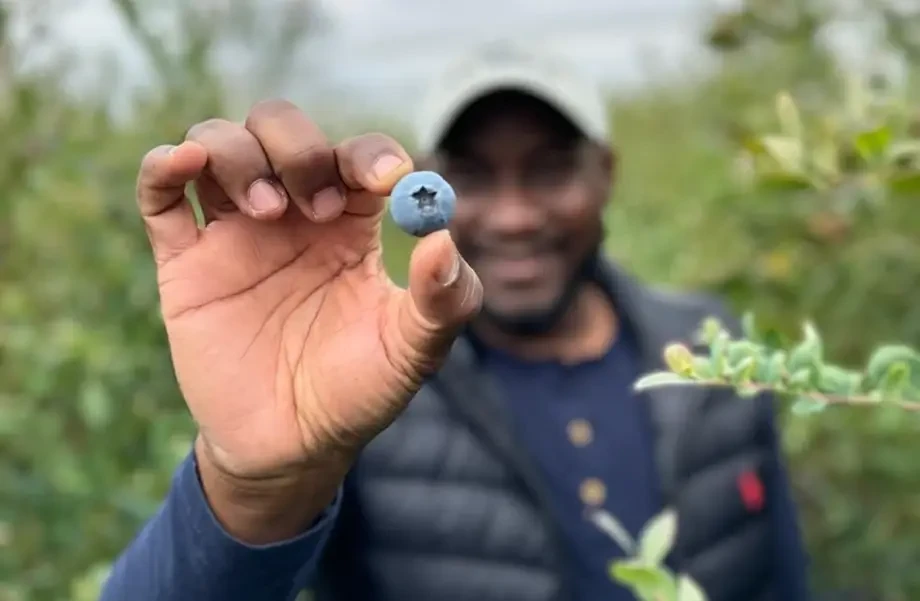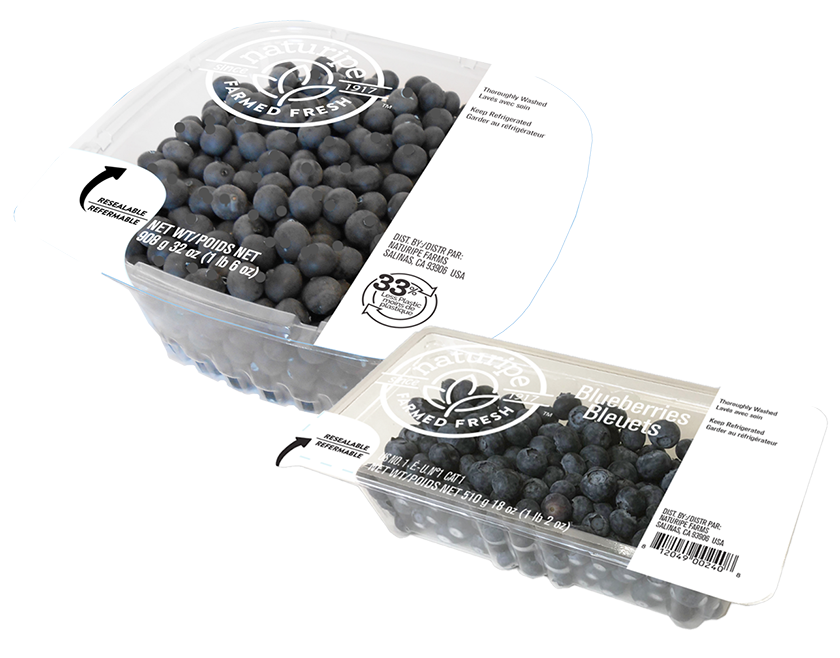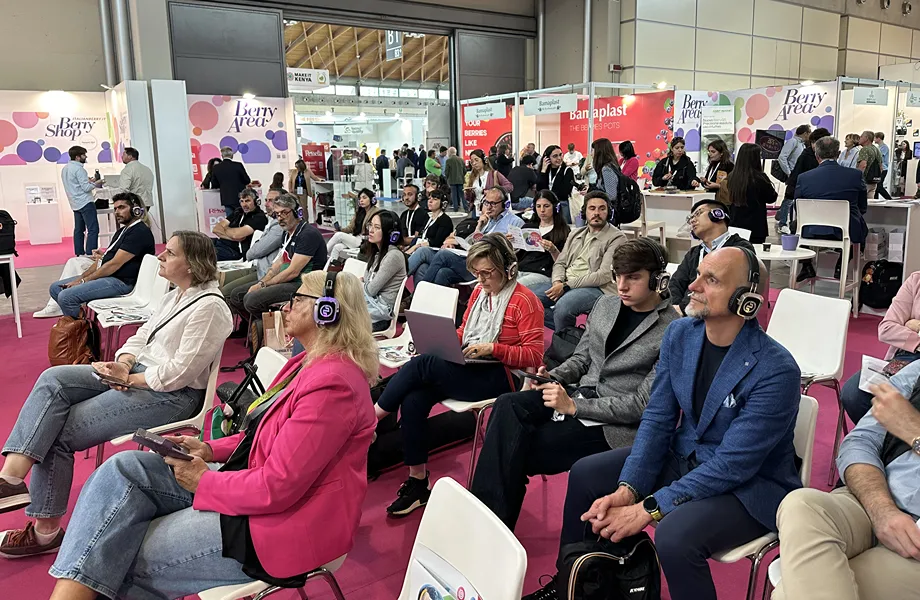The question of which key traits should guide blueberry breeding is complex. It requires balancing different and often conflicting needs, from visual and taste quality to resistance against diseases and environmental stress, as well as efficiency in mechanical harvesting.
Only through a strategic approach, prioritizing the needs of growers and market demands, can new cultivars be developed that ensure competitiveness and sustainability in the industry.
A survey by VacCAP on this topic was recently conducted among blueberry industry stakeholders in various U.S. regions, with responses from Washington (26%), North Carolina (18%), Florida (16%), Oregon (16%), New Jersey (8%), Georgia (5%), Michigan (4%), and Alabama (2%).
The survey on cultivar trait preferences revealed the top priorities among respondents.
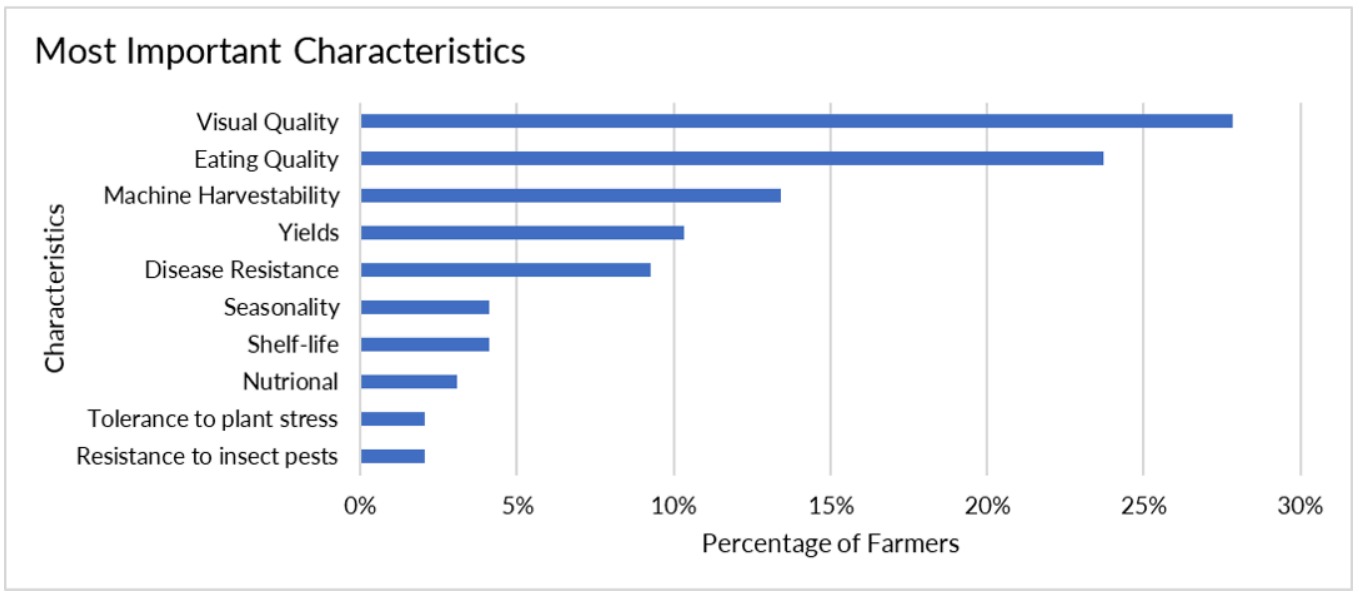
Visual quality ranked as the primary concern for 28% of respondents, closely followed by taste quality at 24%, and mechanical harvesting suitability at 13%.
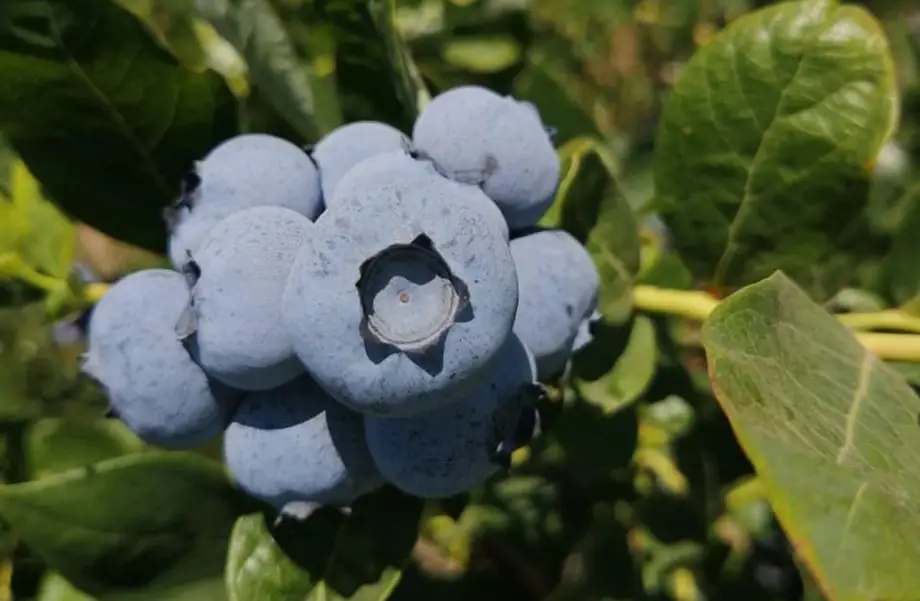
These findings highlight the importance of prioritizing sensory attributes, such as visual and taste quality, to enhance market competitiveness. Additionally, the focus on mechanical harvesting reflects the necessity for growers to adopt efficiency-driven practices.
Visual Quality
The survey on visual characteristics in blueberry cultivation provided key insights into grower priorities. A strong preference for large-sized berries, expressed by 62% of respondents, reflects consumer perceptions of value and taste.
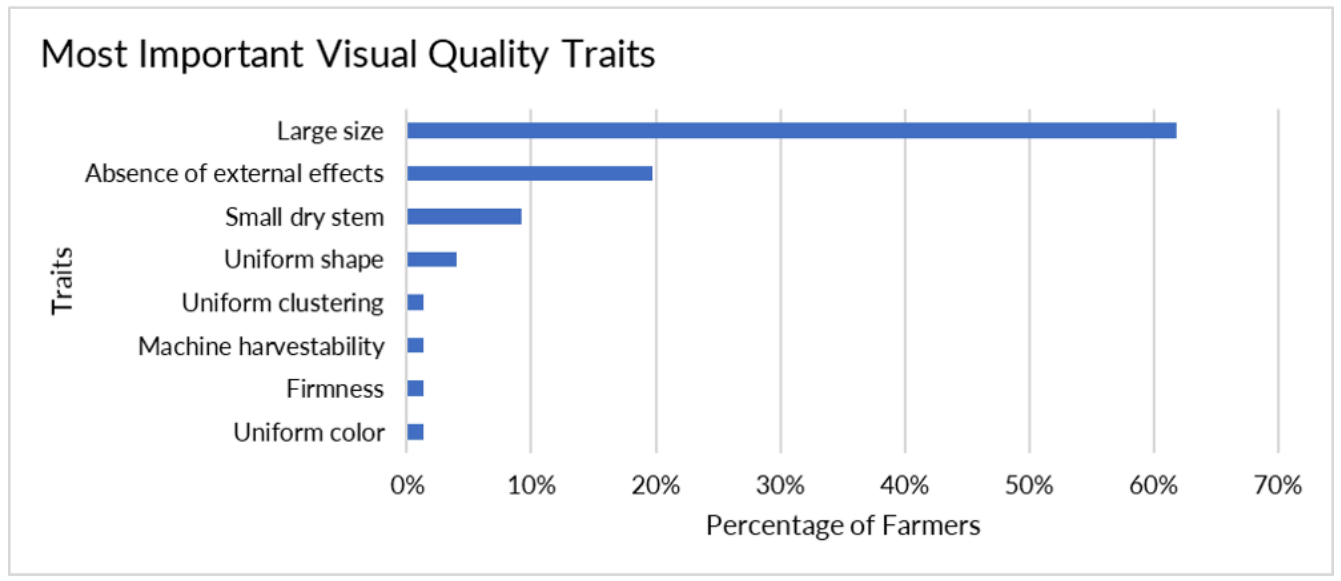
Additionally, 20% of respondents emphasized the importance of blemish-free fruit, demonstrating that fruit integrity is essential for maintaining market competitiveness. Prioritizing these traits enables growers to select and develop cultivars that meet consumer expectations, strengthening their market position.
Taste
The analysis of taste quality characteristics provided valuable insights into growers' key focus areas. Among the evaluated attributes, firmness emerged as the top priority, with 43% of respondents highlighting its importance.
This preference reflects consumer expectations for a satisfying texture and enhanced shelf life.
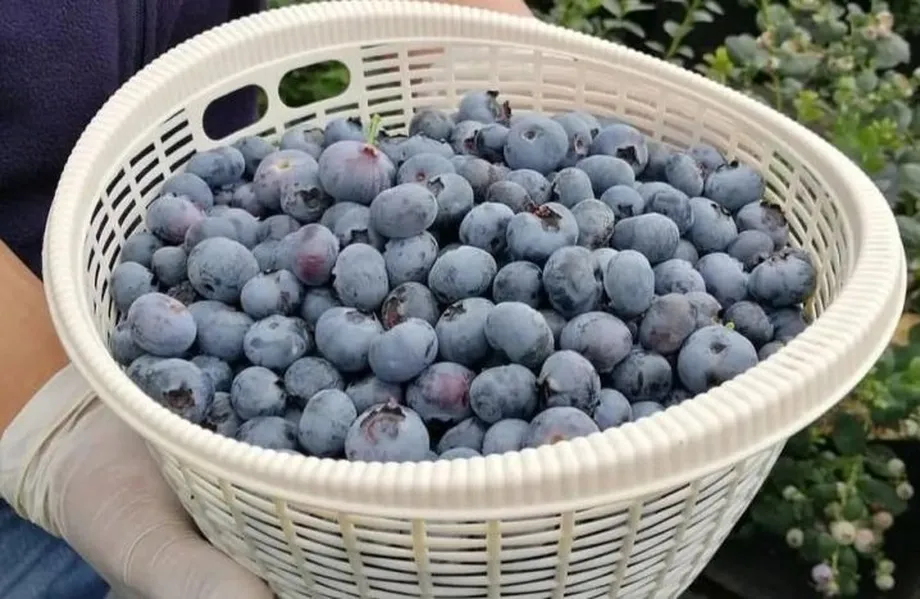
Additionally, flavor was emphasized by 38% of respondents, underscoring its crucial role in ensuring consumer satisfaction and repeat purchases.
These results demonstrate the fundamental importance of taste-related attributes in determining consumer preferences and market competitiveness in the blueberry industry.
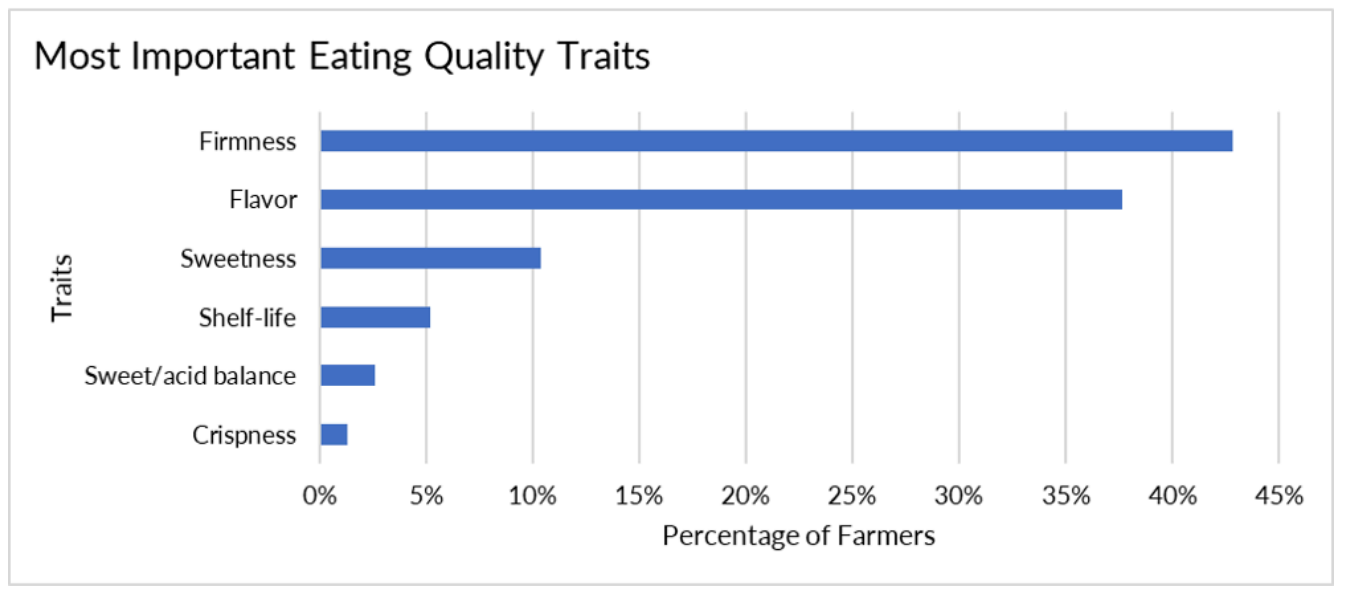
Disease Resistance
The analysis of disease resistance traits highlighted key concerns among growers. Among the various diseases examined, mummy berry (Monilinia vaccinii-corymbosi) emerged as the most critical, with 32% of respondents emphasizing its importance.
This preference reflects growers' awareness of the devastating damage this disease can inflict on blueberry crops if not properly managed.
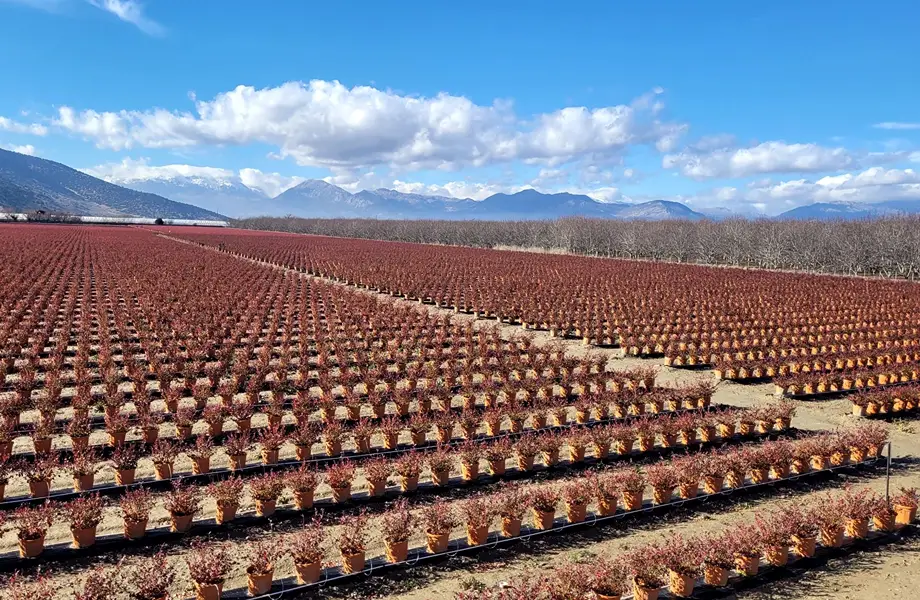
Additionally, anthracnose fruit rot (Colletotrichum acutatum) was reported by 18% of respondents. These findings underscore the critical need to develop cultivars with strong resistance to these diseases to protect crop health and ensure sustainable yields, reinforcing growers' positions in the competitive blueberry market.
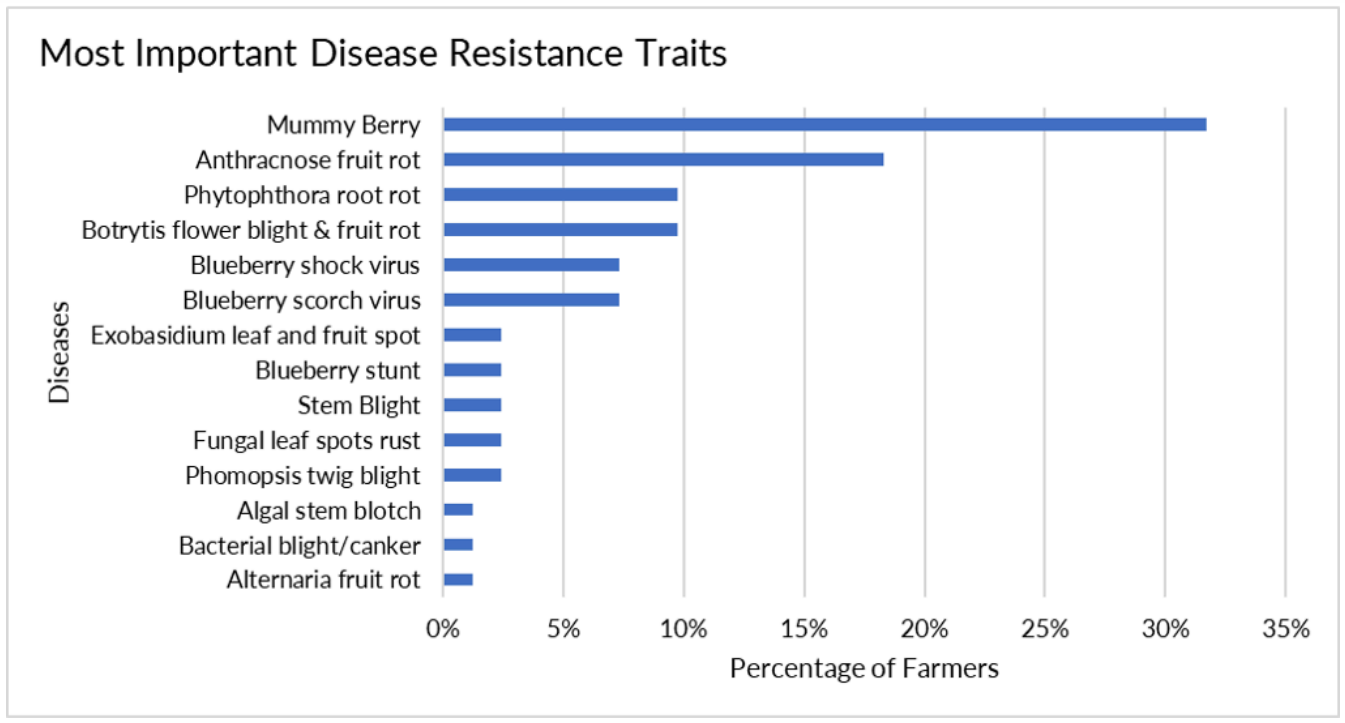
Pest Resistance
The analysis of pest resistance traits in blueberries revealed key grower concerns. Drosophila suzukii (SWD) emerged as the primary threat, with an overwhelming 51% of respondents emphasizing its significance.
This strong response highlights the importance of SWD as a major challenge for blueberry cultivation and the urgent need for effective pest management strategies.
Additionally, aphids and flower thrips were mentioned by 12% and 10% of respondents, respectively, though their lower incidence suggests that primary attention is focused on mitigating the effects of SWD.
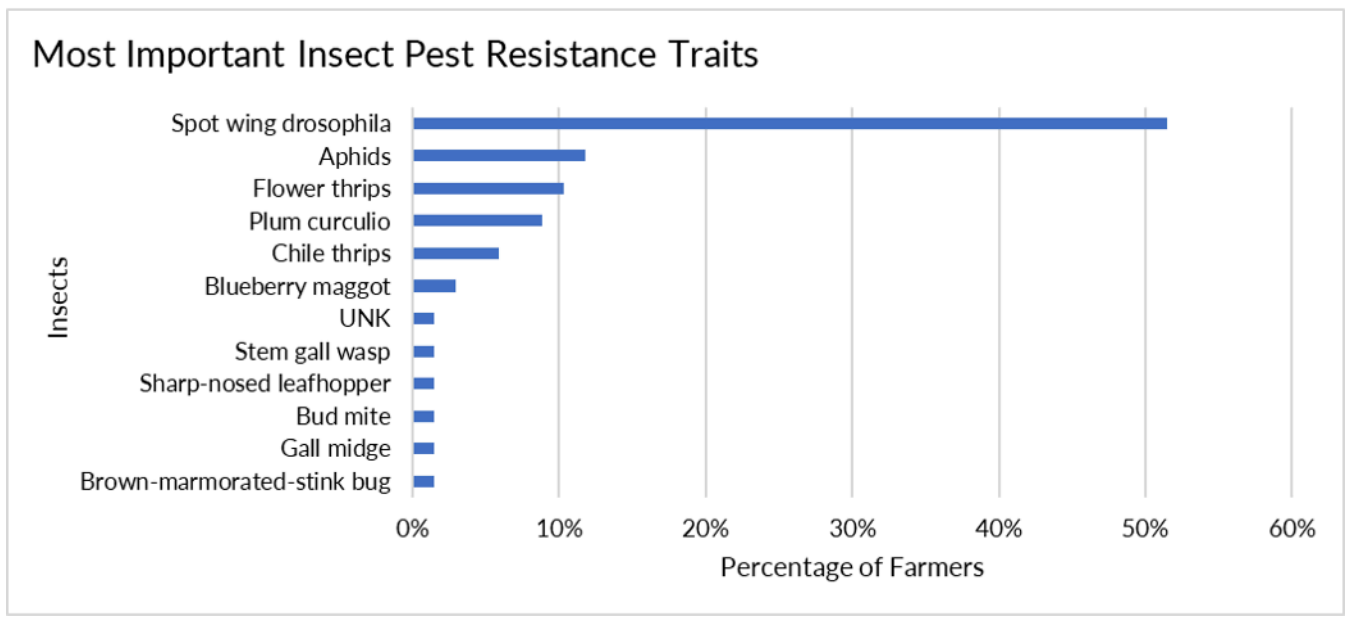
These findings underscore the need to prioritize pest resistance, particularly against SWD, to ensure crop health and sustainable productivity in the blueberry industry.
Environmental Stress Resistance
The analysis of environmental stress resistance traits provided critical insights into grower concerns.
Frost tolerance emerged as the top priority, cited by 43% of respondents, highlighting awareness of its impact on crop health, particularly in colder regions.
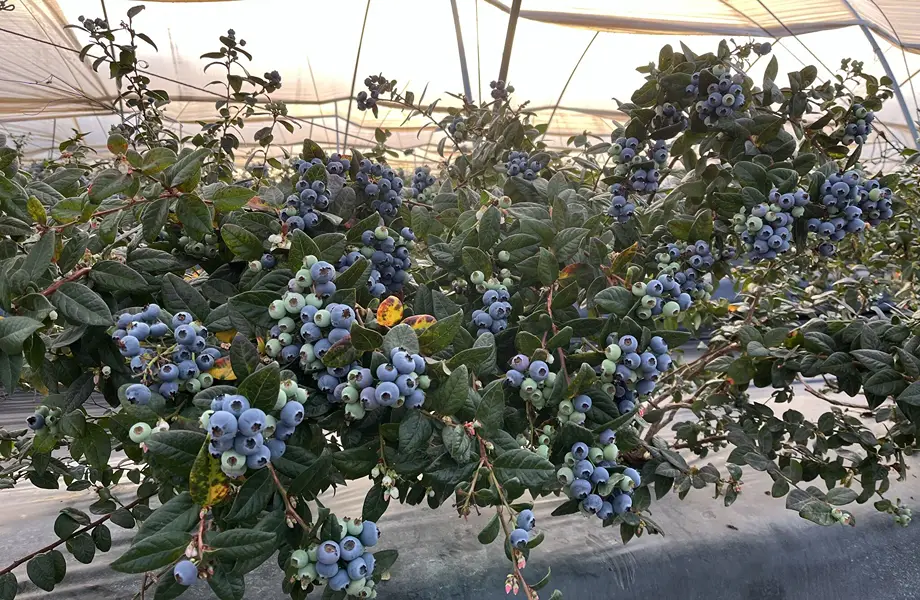
Additionally, 30% of respondents emphasized the importance of heat tolerance and protection against UV damage, stressing the need to mitigate the effects of extreme temperatures and environmental stress.
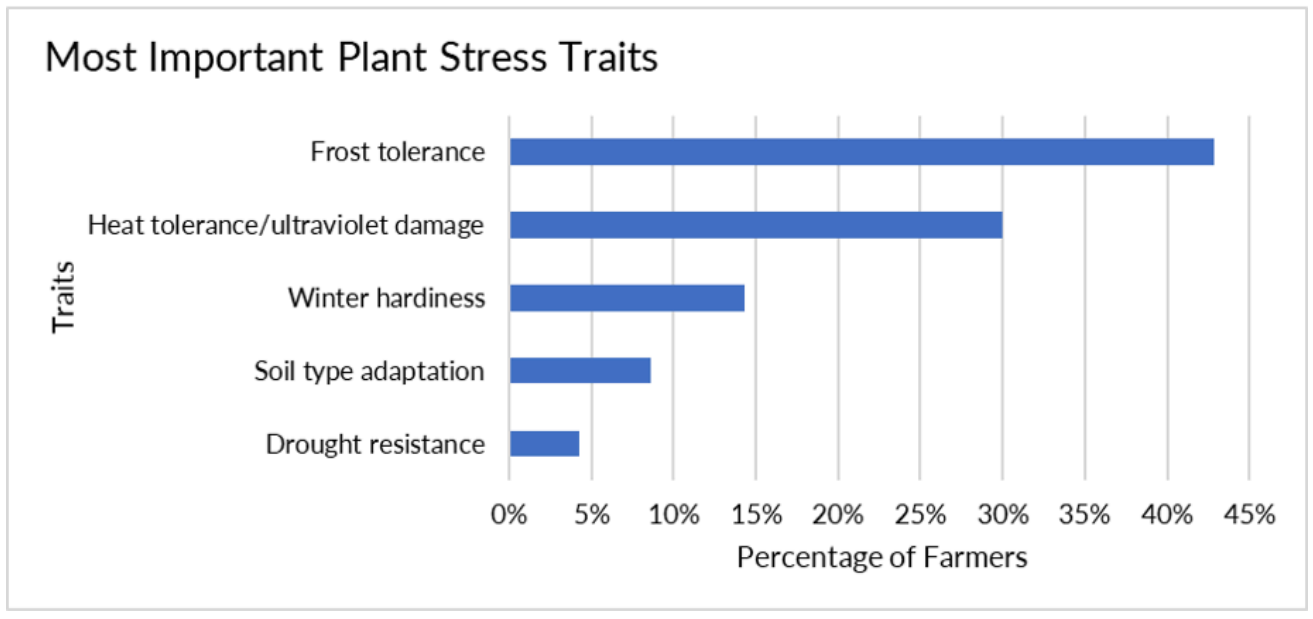
These findings demonstrate the crucial role of environmental stress resistance traits in ensuring crop resilience and stable yields in blueberry cultivation.
Mechanical Harvesting
The analysis of key traits for mechanical harvesting provided essential insights into grower priorities.
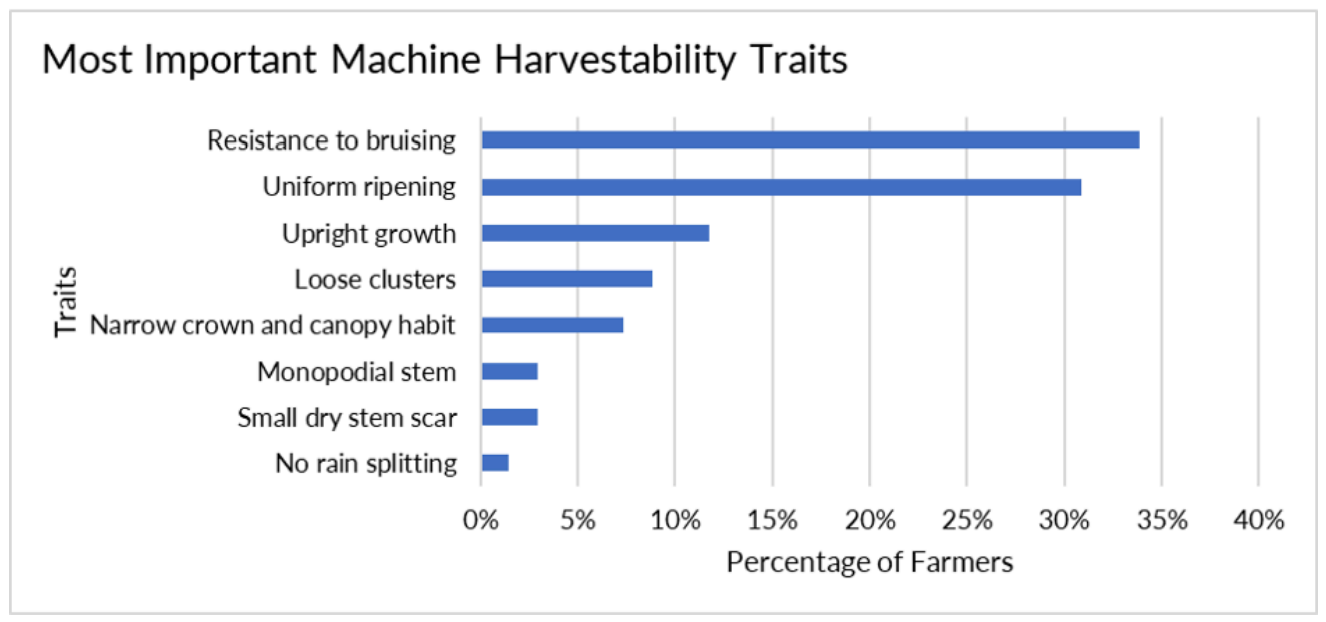
Bruise resistance emerged as the top concern, cited by 34% of respondents, demonstrating the importance of minimizing post-harvest damage.
Additionally, 31% of respondents highlighted the significance of uniform ripening, emphasizing the need for greater consistency in fruit maturity to optimize mechanical harvesting efficiency.
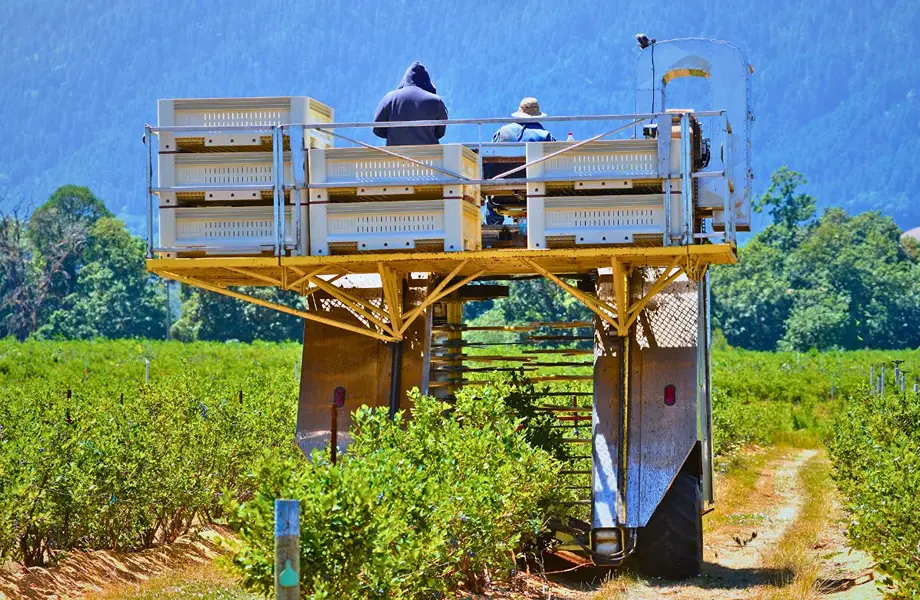
These findings highlight the essential role of mechanical harvesting traits in ensuring efficient and damage-free harvesting processes in the blueberry industry.



